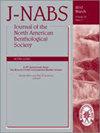The potential of passive stream restoration to improve stream habitat and minimize the impact of fish disease: a short-term assessment
引用次数: 25
Abstract
Abstract We evaluated the potential of habitat restoration to improve stream and riparian habitat and to minimize the prevalence of whirling disease in a population of native cutthroat trout in northern Utah. We fenced 67 ha of riparian habitat to exclude livestock and measured key response variables at impact and control sites before and after the completion of the exclosure. Total N concentrations decreased in response to the exclusion. Over this short time period (1–2 y postrestoration), the combination of natural variability and exclusion of livestock grazing appeared to alter the vegetation and riparian conditions through increased bank stability and decreased % cover of exotic plant species. The effect of the exclosure on whirling disease was confounded by climatic variation. However, restoration appeared to reduce the prevalence of whirling disease during a nondrought year, but not during a drought year. Therefore, in the short term, these beneficial effects of restoration on trout appeared to hinge on favorable climatic conditions. We expect the longer-term restoration response to be affected less than the short-term response by climatic conditions. The results of our study indicate that passive stream restoration is an effective management approach for restoring stream habitat and has the potential to minimize interactive effects of disease and habitat degradation, especially when other options for disease management are not possible or practical.被动河流恢复对改善河流生境和减少鱼类疾病影响的潜力:短期评估
摘要:我们评估了栖息地恢复的潜力,以改善溪流和河岸栖息地,并尽量减少犹他州北部本地切喉鳟鱼种群中旋转病的流行。我们将67公顷的河岸栖息地围起来以排除牲畜,并在围起来之前和之后测量了影响和控制地点的关键响应变量。全氮浓度因排除而降低。在这一短时间内(恢复后1-2个月),自然变率和排除牲畜放牧的结合似乎通过增加河岸稳定性和减少外来植物物种的盖度来改变植被和河岸条件。封育对旋流病的影响与气候变化相混淆。然而,在非干旱年,恢复似乎减少了旋转病的流行,但在干旱年却没有。因此,在短期内,恢复对鳟鱼的这些有益影响似乎取决于有利的气候条件。我们预计,气候条件对长期恢复响应的影响要小于短期响应。我们的研究结果表明,被动的河流恢复是恢复河流栖息地的有效管理方法,并且有可能最大限度地减少疾病和栖息地退化的相互影响,特别是在其他疾病管理方法不可能或不可行的情况下。
本文章由计算机程序翻译,如有差异,请以英文原文为准。
求助全文
约1分钟内获得全文
求助全文

 求助内容:
求助内容: 应助结果提醒方式:
应助结果提醒方式:


